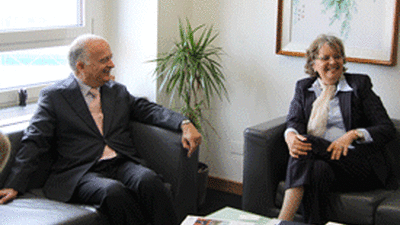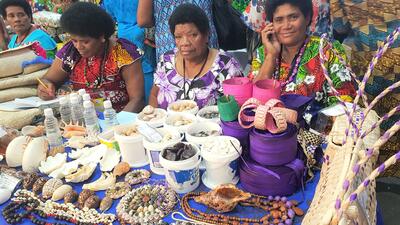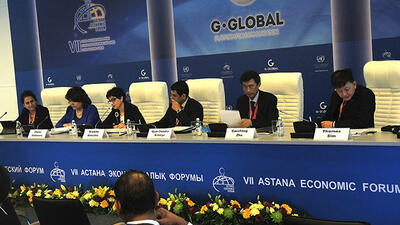Finance: fuelling the trade as the engine of growth (en)
Ms Lakshmi Venkatachalam, Vice President, Private Sector and Co-Financing Operations, Asian Development Bank, said that while GDP growth in the region is expected to remain relatively strong, at 6.1% this year and 6.7% in 2013, the collapse in trade financing during the economic crisis accounted for about 15% of the decrease in world trade, according to the World Bank. He argued that there is a high demand for trade finance services, but the private sector is unable to meet this demand. The ADB has therefore launched a trade finance programme to fill the gap, working with 200 partner banks to offer guarantees and loans, he said. The scheme supported US$ 3.5 billion in exports by 660 SMEs in 2011.
If trade is the engine of growth, then trade finance is the fuel, said Mr Nazeem Noordali, General Manager for Corporate and Structured Finance, International Islamic Trade Finance Corporation of the Islamic Development Bank Group. When conventional banks reduced liquidity during the economic crisis, his organization had tried to bridge the gap, changing its business model from traditional import finance to trade commodity financing, he said. His Group’s trade finance portfolio now amounts to US$ 4.4 billion, demonstrating the importance of Islamic financ.. In terms of interregional trade, he noted an increasing East-East momentum, with greater cooperation between the Middle East and Asia.
Mr Suharsono, Managing Director of the Indonesian Exim Bank, explained that his bank was formed three years ago, focusing on providing financing, currency and insurance of financial risks for exports. He said that 79% of the trade facilitated by the bank is with emerging markets, especially within Asia, including China, Malaysia and Thailand, mostly involving rubber and textiles. At the same time, only 2% of trade is with Africa.
Meanwhile Mr Rene Awambeng, Group Head, Regional Corporates and Commodity Finance, Ecobank, UK, said that Ecobank is a leading Pan-African bank, offering a one-stop shop for trade finance in sub-Saharan Africa. Mr Amambeng drew attention to the problems of the lack of links between banks in developing countries and regions which make even simple transactions complicated and costly.
Mr Felix Adahi Bikpo, CEO, African Guarantee Fund, Kenya, explained how his organization helps providing comfort to financial institutions in supporting SMEs. If SMEs are not financed, he said, they will not be able to join supply chains. If African GDP is to grow, the continent needs to find other sources of business, and this could be through South-South trade. This has to be led by SMEs, but the problem remains information asymmetry, he warned, is a weak financial structure and the inability to access finance. Banks seek collateral, which is difficult and expensive for SMEs, so there is a need to find a new guarantee product to remove this obstacle to growth, providing equity guarantees so that the bank will convert short term finance into long term.
Mr André Soumah, Executive Chairman, ACE Global, Switzerland, said his organization aimed to help finance the whole trade pipeline. The approach today, he said, has shifted from balance sheet finance to transaction finance, while covering the legal issues to mitigate risk, and this offered opportunities for SMEs that were otherwise well prepared for exports but did not have access to financing.
Read the full summary from Financing Trade between Emerging Markets.








